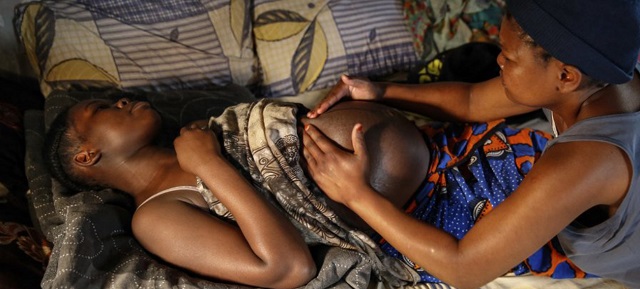
Why they are still thriving despite ban
Kampala, Uganda | PATRICIA AKANKWATSA | Although advancements have been made to encourage Ugandan women to deliver their babies at healthcare facilities, some women still choose to use the services of Traditional Birth Attendants despite the well-documented risks.
The government banned traditional birth attendants from delivering babies in 2010 in the hope of improving maternal- and infant mortality rates. But despite ubiquitous free prenatal care in government hospitals, use of Traditional Birth Attendants continues to be both widespread and popular.
Alice Namwebwa, 22, says she can never go back to a hospital because of her first experience at a health Centre.
Namwebwa says when she felt labour pains she rushed to the nearest health centre. On arrival, the midwife told her to go and lie on the bed. And that was it. She was abandoned.
“I was confused. I didn’t know what to do yet I was in so much pain and I could feel like the baby was coming,” she narrates.
“I quickly laid polythene linen on the bed and waited but the midwife was not coming back. Then I felt the urge to pee. I had my bucket and when I squat to pee, the baby came out and fell in the bucket. By the time, the midwife came, I had already given birth by myself.
“I vowed to never go back to a hospital because what is the point if I can do it myself or at least the old women in the village can help me,” she says.
Namwebwa is one of many Ugandan women who do not see any benefits to going to a health facility to give birth. They give many reasons for preferring a trusted Traditional Birth Attendant instead.
Dr Olive Ssentumbwe, a family health expert from the World Health Organisation (WHO) says the poor hospital infrastructure is a common barrier. She says many of these facilities suffer from drug shortages, lack of refrigeration, frequent electricity and water shortages especially at night, staff shortages, and lack of beds for both mothers and children.
Dr Ssentumbwe was Aug.06 speaking at a weekly maternity rights engagement by Native Voices International in partnership with White Ribbon Alliance, Uganda.
She says the high cost of delivery in hospitals also discourages many women. She points at how most hospitals require women to buy “Mama Kits” which contain sterile needles and sutures for stitches, gloves, and sterile razor blades.
“These kits cost on average Shs 20,000 while the average rural middle-income Ugandan makes around Shs50,000 per month, and the average urban middle-income Ugandan makes around Shs300,000 per month,” she says, “Therefore, some mothers prefer to give birth from home where a lot is not required.”
The engagement which was held under the theme, “Ten years after banning Traditional Birth Attendants, how is Uganda fairing”, sought to understand why women still go to traditional birth attendants despite the ban and what can be done to phase out the habit.
According to the Ministry of Health’s Reproductive, Maternal, New-born, Child and Adolescent Health Sharpened Plan for Uganda 2016-2020, about 416,000 women in the country annually are still not assisted by a skilled birth attendant
In 2021, 80% of women gave birth at health facilities and 20% visited the traditional birth attendants.
Dr Richard Mugahi, the assistant commissioner in charge of Maternal and Infant Health, says while many women are delivering from health facilities, some still go to traditional birth attendants because of many reasons.
He says there have been multiple documented incidents of staff members extorting bribes from patients before receiving services.
“Although user fees for maternal healthcare were officially abolished in 2001 at all government hospitals, there are still hidden costs for women that give birth to health facilities,” he says.
Monica Namulondo, a traditional birth attendant says that health facilities may be physically inaccessible to mothers due to distance, time of year, and difficulty of the terrain.
Within Uganda, particularly in the southwestern region, there are large populations of people who live in high-altitude and mountainous areas. Travelling from these areas into town can take hours by foot and a majority of residents lack reliable transportation. Pregnant women, especially those undergoing active labour, are often physically unable to manage the distance and terrain.
“During different times of the year, most often the rainy season, dirt roads can become flooded and filled with thick mud, making them impassable by both foot and car,” she says.
She also says that there have also been continuous complaints of a lack of community involvement when building new health facilities.
“Many times, this lack of involvement results in incidents of health facilities being built on particular clan grounds that prevent other neighbouring groups from seeking services because of pre-existing conflicts and risks of violence between the groups,” she says.
Namulondo who says she has been a traditional birth attendant for 25 years, adds that TBAs are are often the primary source of care for women in these areas, particularly those who go into labour late at night.
“I think we shouldn’t be phased out but work hand in hand with professional midwives. I have done it and it works. We work together like I can be the first aid and when things fail; I refer the mother to a health facility,” she says.
She also says that traditional Birth Attendants administer various local herbs to help with both the delivery process and post-natal healing of the mother and child. Certain ethnic groups believe that these traditional medicines should not be mixed with modern pharmaceuticals for fear of drug interactions.
“Many Ugandans also perceive local medicine as being safer with fewer side effects or potential for harm compared to Western medications,” she says.
Dr Ssentumbwe recommended that there must be commitment amongst stakeholders and the government to promote favourable policies to curb the still prevailing use of traditional birth attendants as opposed to professional medical facilities.
Sarah Kizza Nsigaye, the Executive Director, of Native Voices International, says she wants health service providers to offer compassionate care to mothers. She also wants the government should incorporate traditional birth attendants in its systems and to identify and address critical issues that propel mothers to resort to the TBA services despite the ban on them.
****
 The Independent Uganda: You get the Truth we Pay the Price
The Independent Uganda: You get the Truth we Pay the Price


